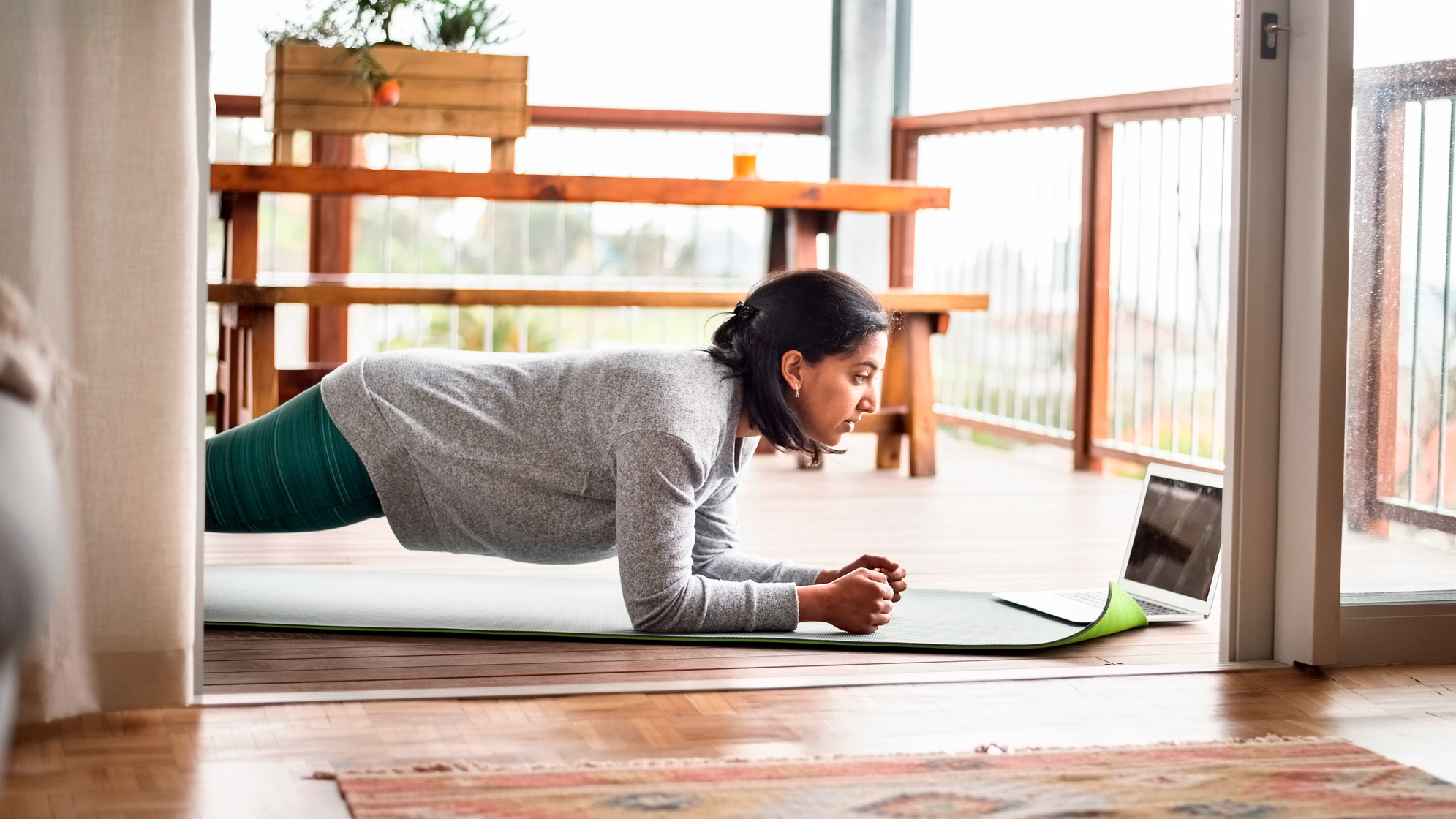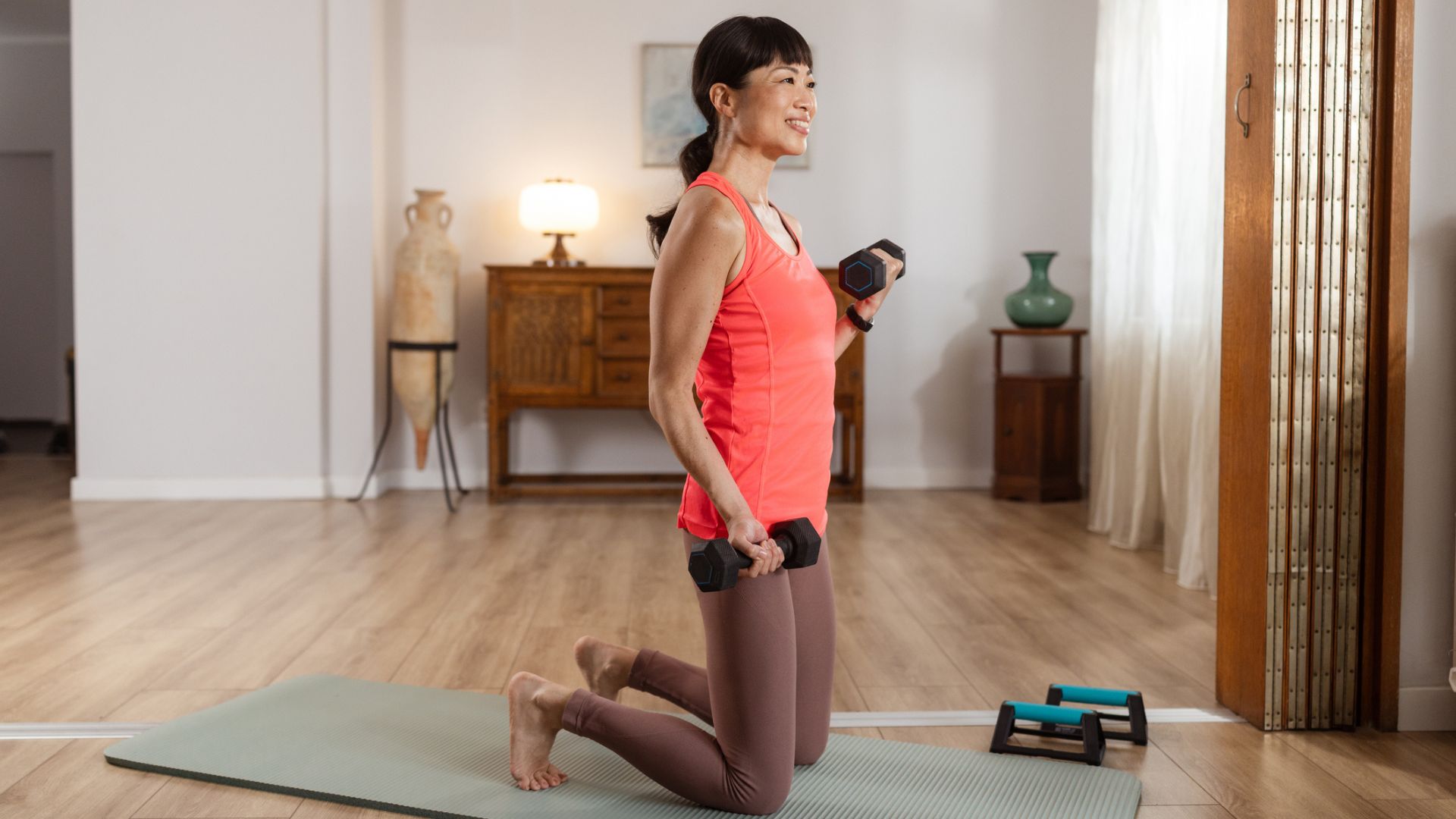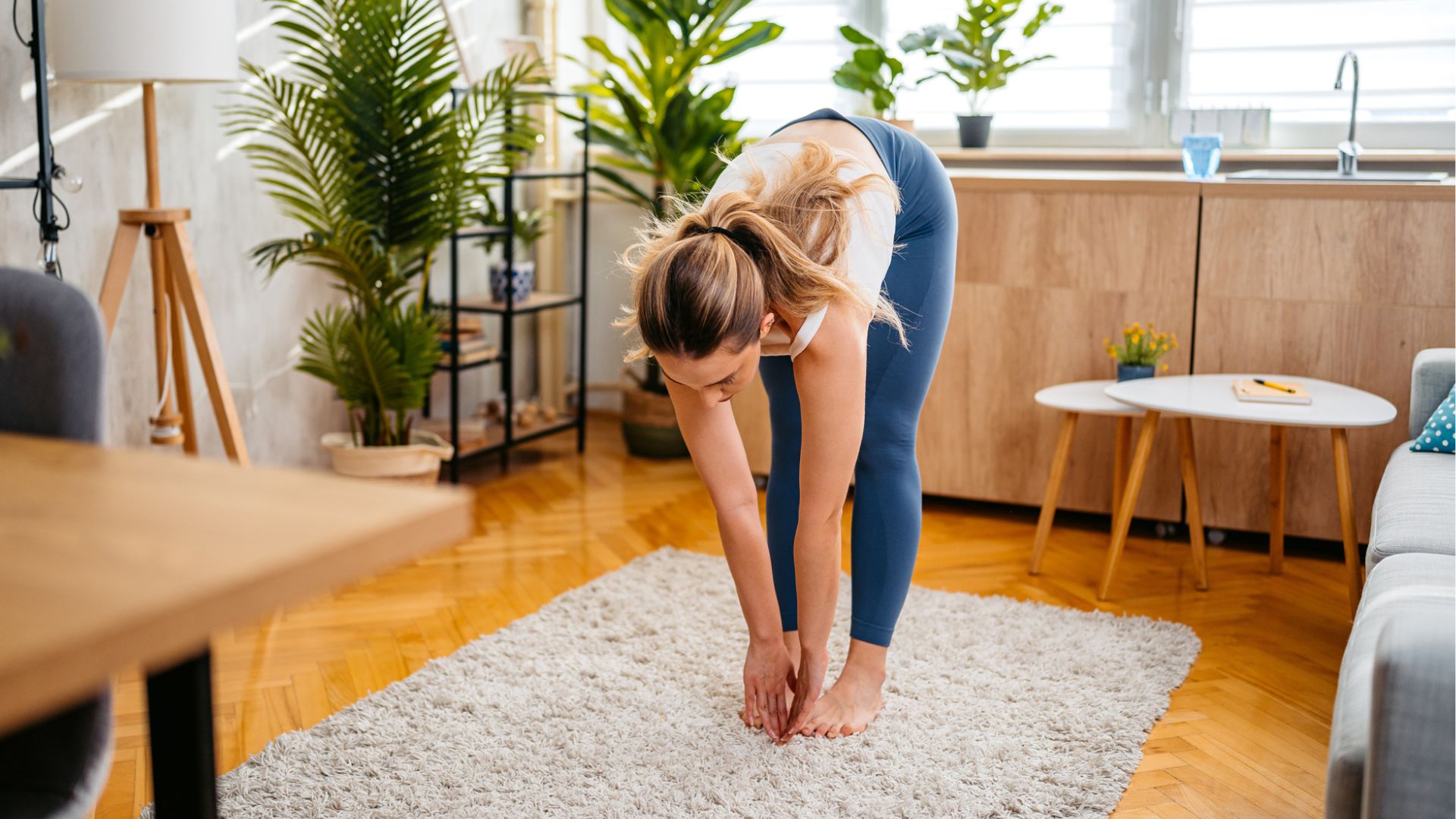Can't hold a plank for a minute? You don't have to. Use this trainer's technique hack to build a solid core in half the time
One simple adjustment makes a world of difference

We all love a plank, right? OK, in truth everybody finds the plank exercise tough—nothing makes time stand still like when you're shaking like a leaf trying to hold your form.
Want your next set of planks to be over quicker? Then try this simple tweak from Gede Foster, director of fitness and performance at digital fitness platform FIIT, which will upgrade this classic move, making it kinder on your joints while reducing the amount of time you need to hold it. (Full disclosure: it's because the tweak makes it harder.)
Foster recently shared this simple hack on Instagram, explaining how we can get more out of less time, and I pinned her down to learn more about why it works and how to do it.
A post shared by Gede Foster (@gedefoster)
A photo posted by on
Use this plank hack to boost your core strength in half the time
Foster's adjustment is refreshingly simple.
"Once in position, concentrate on pulling your elbows towards your toes," she says. "Apart from the fact it makes the move infinitely harder, you can't really do it if your pelvis isn't in the right place." Drawing your elbows toward your midline will activate your glutes, ensuring your lower back holds a neutral spine position throughout.
The adjustment also avoids a common mistake—forgetting to engage your shoulder girdle. "People often sit into the shoulder joint," says Foster. "Whereas when you introduce that sensation of sliding the elbows back toward the toes it brings your lats [of the mid and upper back] and all the stabilizer muscles around the shoulder girdle into play."
Lastly, because this tweak makes the exercise that much harder, you needn't hold it for as long to reap all the same benefits of a standard plank. "For those who find they can hold a standard plank for a minute, try this cue and you'll find you can only hang on for 30 seconds. It makes working your core more efficient. More benefits in less time."
Get the Fit&Well Newsletter
Start your week with achievable workout ideas, health tips and wellbeing advice in your inbox.
How to perform this advanced plank exercise
While this is an advanced version of the standard plank, this move is suitable for all levels. Here's how to execute it with flawless form.
- Lie on the floor face down, with your torso propped up on your forearms, with your shoulders directly over your elbows and palms flat on the floor.
- Engage your core and lift your hips so that your ankles, knees and shoulders are in a straight line. Keep your head in a neutral alignment and your neck relaxed.
- Now for the hack: without actually moving your elbows, try to pull them towards your feet to dramatically increase the intensity of the exercise. Remember to breathe.
- Maintain this tension for your desired duration. 15 seconds is good. 30 seconds is plenty. 60 seconds is formidable.
Benefits of the plank exercise
Plank exercises have fallen out of favor. As functional fitness has muscled its way into the mainstream, core workouts now typically involve dangling from a pull-up bar, holding a kettlebell overhead or imitating bears.
But Foster is a firm believer that the plank fully deserves its place in anyone's abs workout repertoire. "The plank is one of the best exercises to develop core strength and stability," says Foster.
"Planks don't just train the abdominal wall. Done right, they simultaneously activate the glutes and shoulder girdle too, while training the relationship between the glutes, the core and the shoulder girdle."
This relationship, she says, is essential for functional movements like deadlifts, Romanian deadlifts and overhead presses, which all "require proficient core stability to transfer power from the lower body to the upper body."
Planks also tap into the deeper core muscles, she adds, providing vital support and stabilization for the lower back, to reduce the risk of injury and promote good posture. "This makes it an excellent exercise for runners and for people whose core will be weakened from sitting down at a desk all day," says Foster.

Sam Rider is an experienced freelance journalist, specialising in health, fitness and wellness. He is also a REPS level 3 qualified personal trainer.
-
 I’m a personal trainer and these are some of my favourite exercises to build core and upper body strength at home
I’m a personal trainer and these are some of my favourite exercises to build core and upper body strength at homeAll you need is a set of dumbbells for this kneeling workout
By Maddy Biddulph
-
 It only takes two minutes a day to build up the flexibility required to touch your toes, says a top mobility coach
It only takes two minutes a day to build up the flexibility required to touch your toes, says a top mobility coachMeasure, reach and repeat says Roger Frampton
By Sam Rider